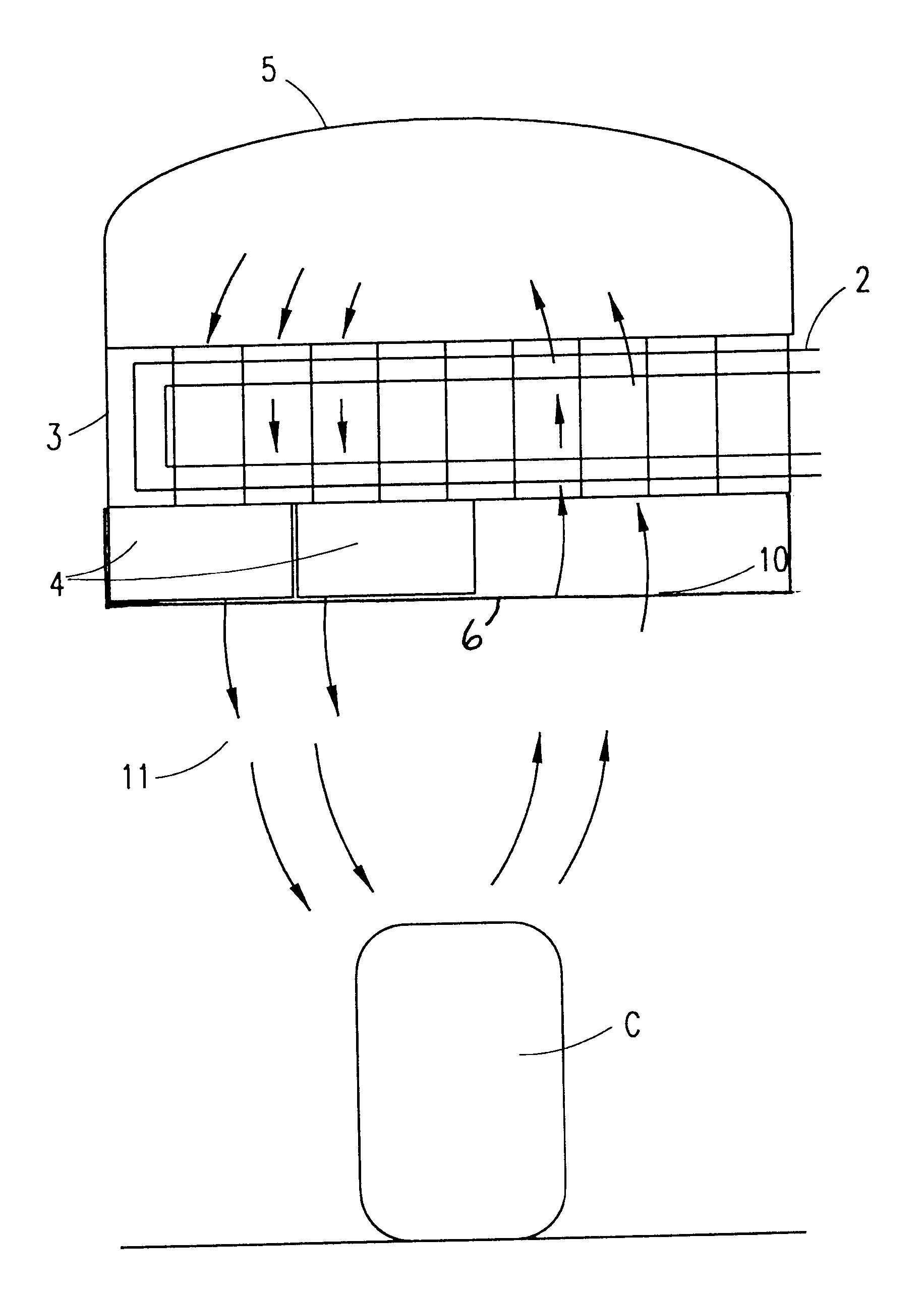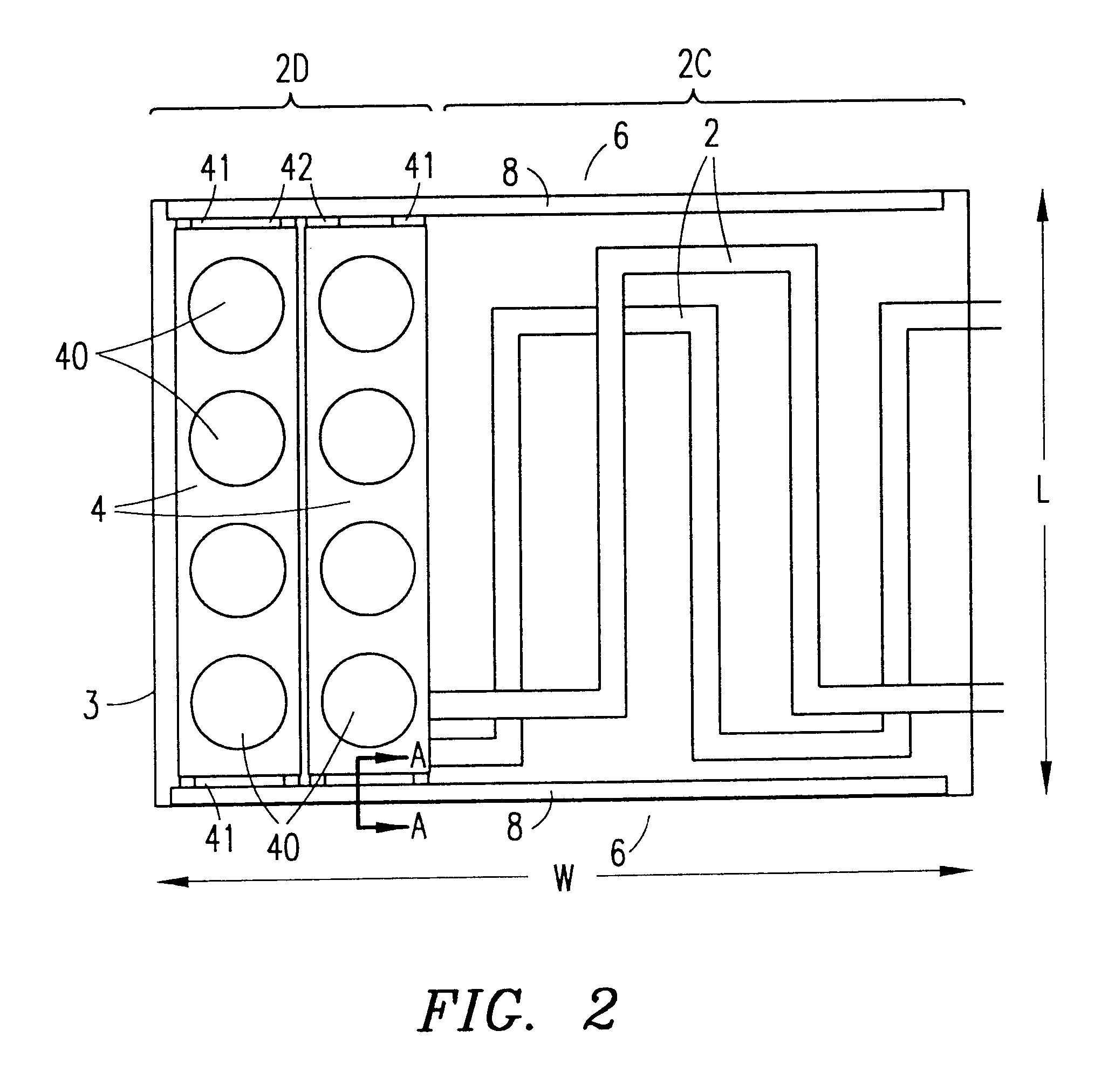Reconfigurable system and method for cooling heat generating objects
a technology of cooling electronic equipment and reconfigurable systems, which is applied in the direction of domestic cooling equipment, lighting and heating equipment, electrical equipment casings/cabinets/drawers, etc., can solve the problems of difficult to modify the cooling system accordingly, the cooling characteristics of existing cooling systems are often a costly adventure, and the system rigidity is difficult to achieve. achieve the effect of greater and greater efficiencies
- Summary
- Abstract
- Description
- Claims
- Application Information
AI Technical Summary
Benefits of technology
Problems solved by technology
Method used
Image
Examples
first embodiment
In the present invention, hood assembly 5 is dome-shaped or otherwise includes tapered end portions, as shown in FIG. 1. It is understood, however, that hood assembly 5 may have other shapes.
Cooling system 1 is preferably dimensioned so that cooling system 1 unobtrusively hangs from a ceiling or other structure, without interfering with objects or persons underneath cooling system 1. By way of one example, the combined height of hood assembly 5 and frame member 3 / heat exchanger 2 is approximately 18". It is understood, that the dimensions of cooling system 1, including the height thereof, may vary.
Because the thermal characteristics of heat generating object C may vary over time, such as by moving heat generating object C relative to cooling system 1 or adding equipment to or removing equipment from heat generating object C, it is advantageous to modify the cooling and / or operating characteristics of cooling system 1 accordingly. According to an embodiment of the present invention, ...
second embodiment
In the present invention, cooling system 100 includes fan units 4 that are disposed between heat exchanger 2 and hood assembly 5 (FIG. 9). In this embodiment, tray members 6 are disposed from one end of cooling system 1 to another. Fan units 4 engage with tray members 6 as described above so that each fan unit 4 is independently positionable along tray members 6. Fans 40 within fan units 4 are operable to blow air that was previously collected along airflow paths 20 within hood assembly 5. Fans 40 blow the collected air through heat exchanger 2 and towards heat generating object C along airflow paths 21. The blown air is thus twice cooled by heat exchanger 2, a first time as the air is being collected and a second time as the air is blown from fan unit 4.
PUM
 Login to View More
Login to View More Abstract
Description
Claims
Application Information
 Login to View More
Login to View More - R&D
- Intellectual Property
- Life Sciences
- Materials
- Tech Scout
- Unparalleled Data Quality
- Higher Quality Content
- 60% Fewer Hallucinations
Browse by: Latest US Patents, China's latest patents, Technical Efficacy Thesaurus, Application Domain, Technology Topic, Popular Technical Reports.
© 2025 PatSnap. All rights reserved.Legal|Privacy policy|Modern Slavery Act Transparency Statement|Sitemap|About US| Contact US: help@patsnap.com



